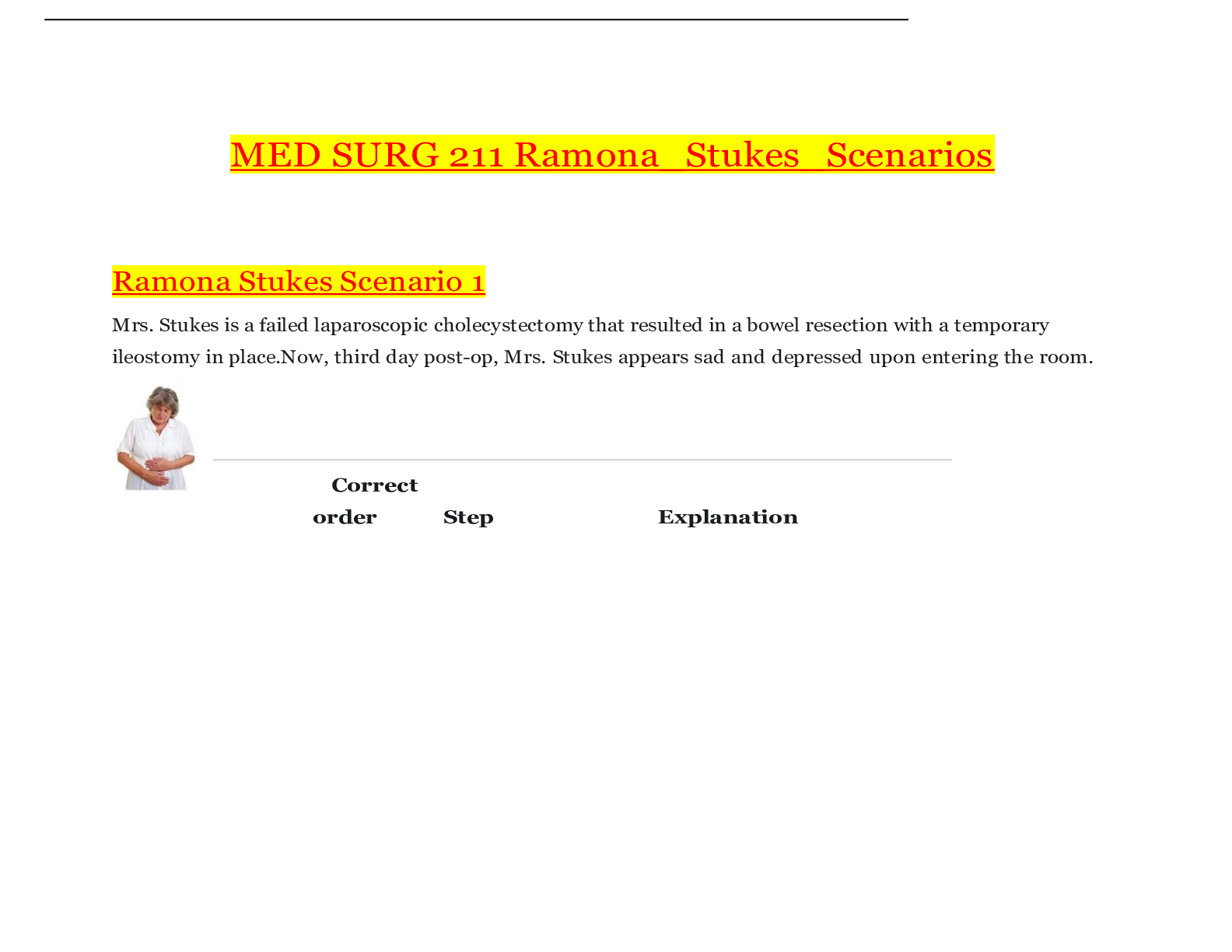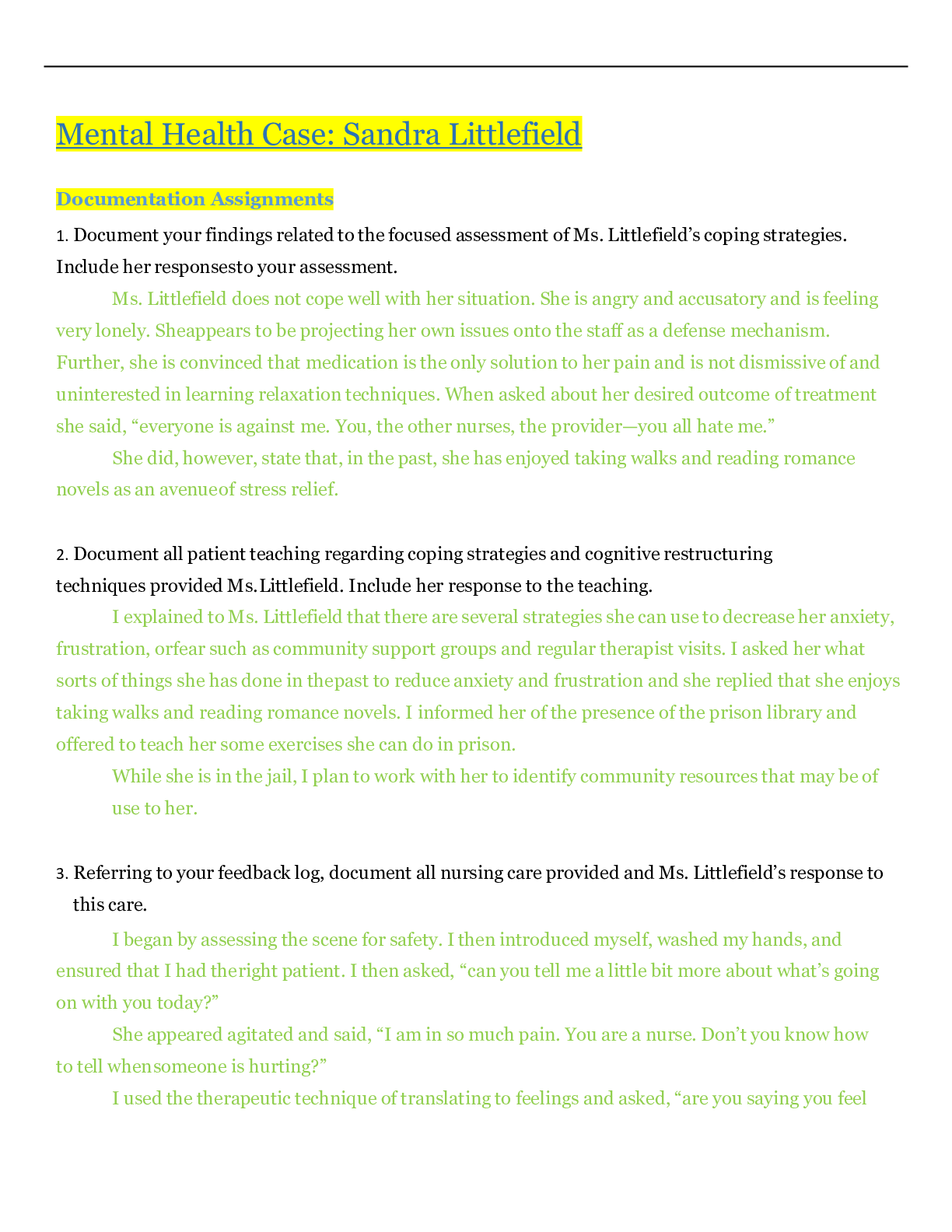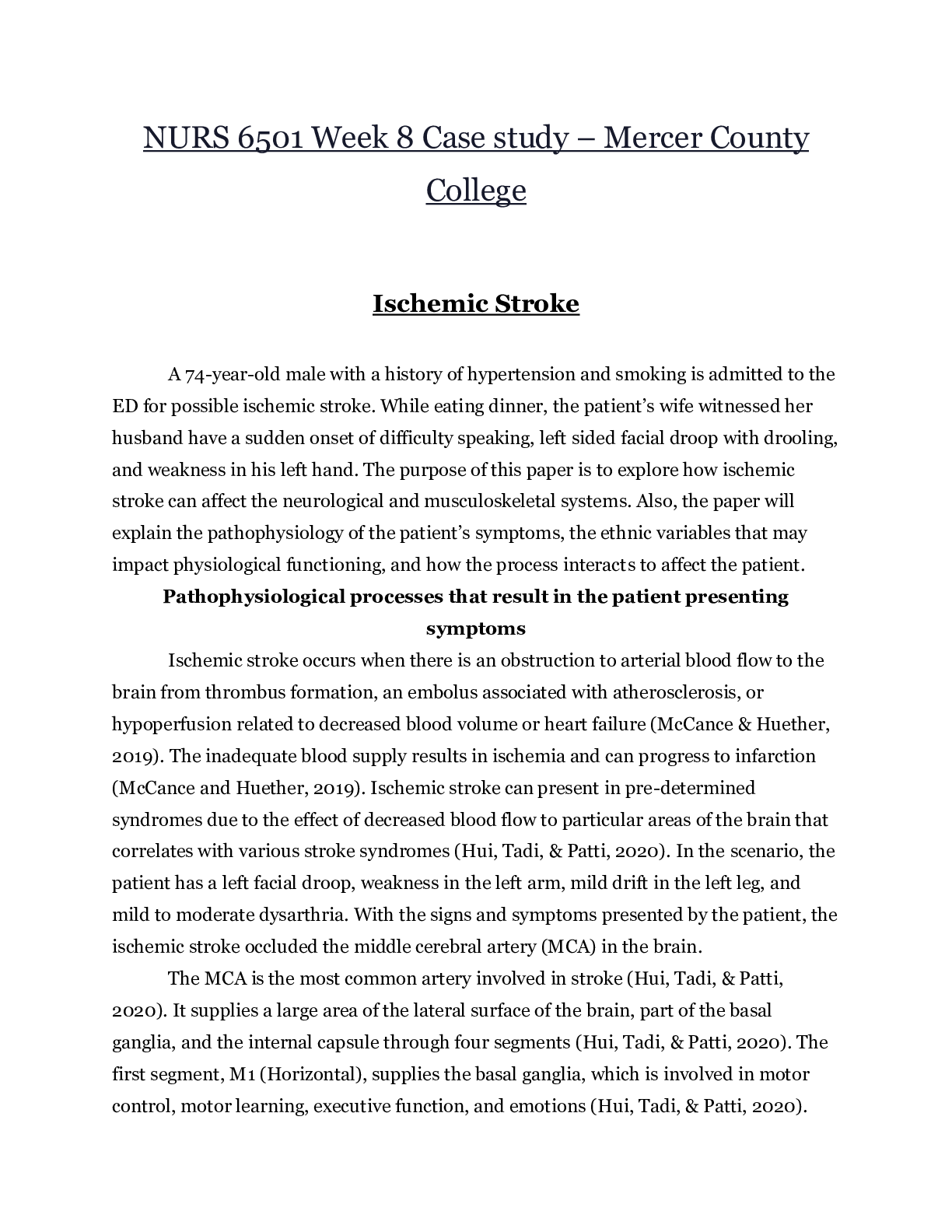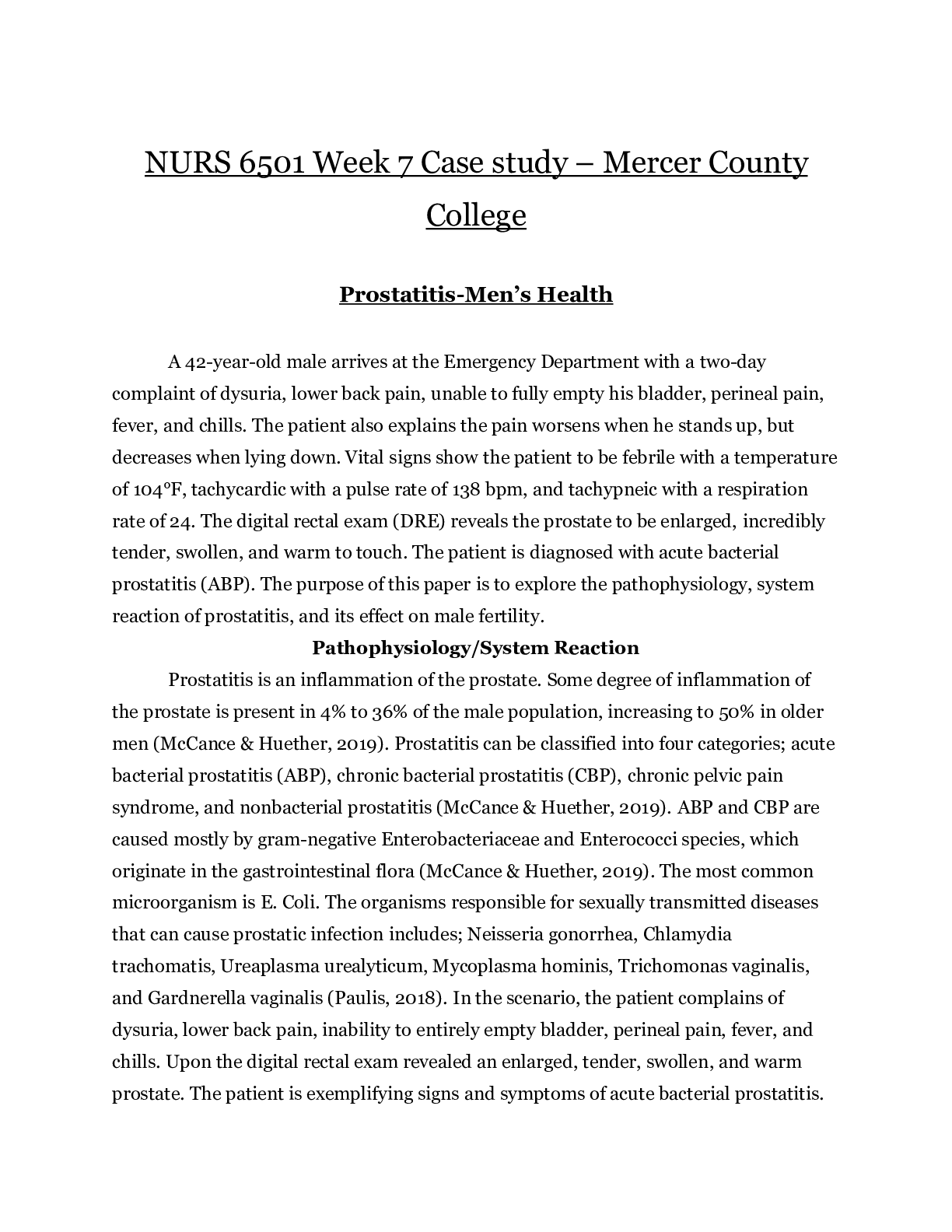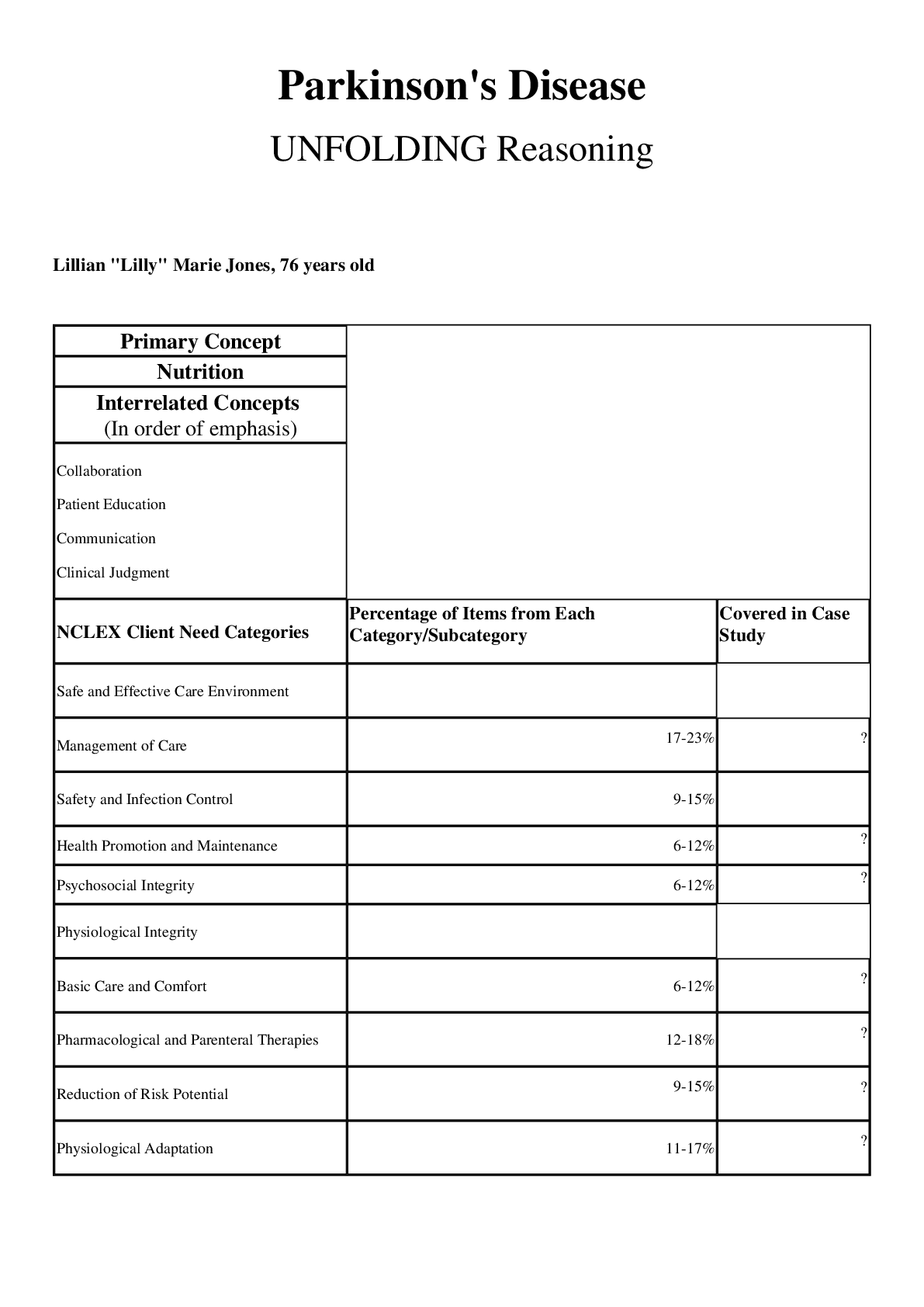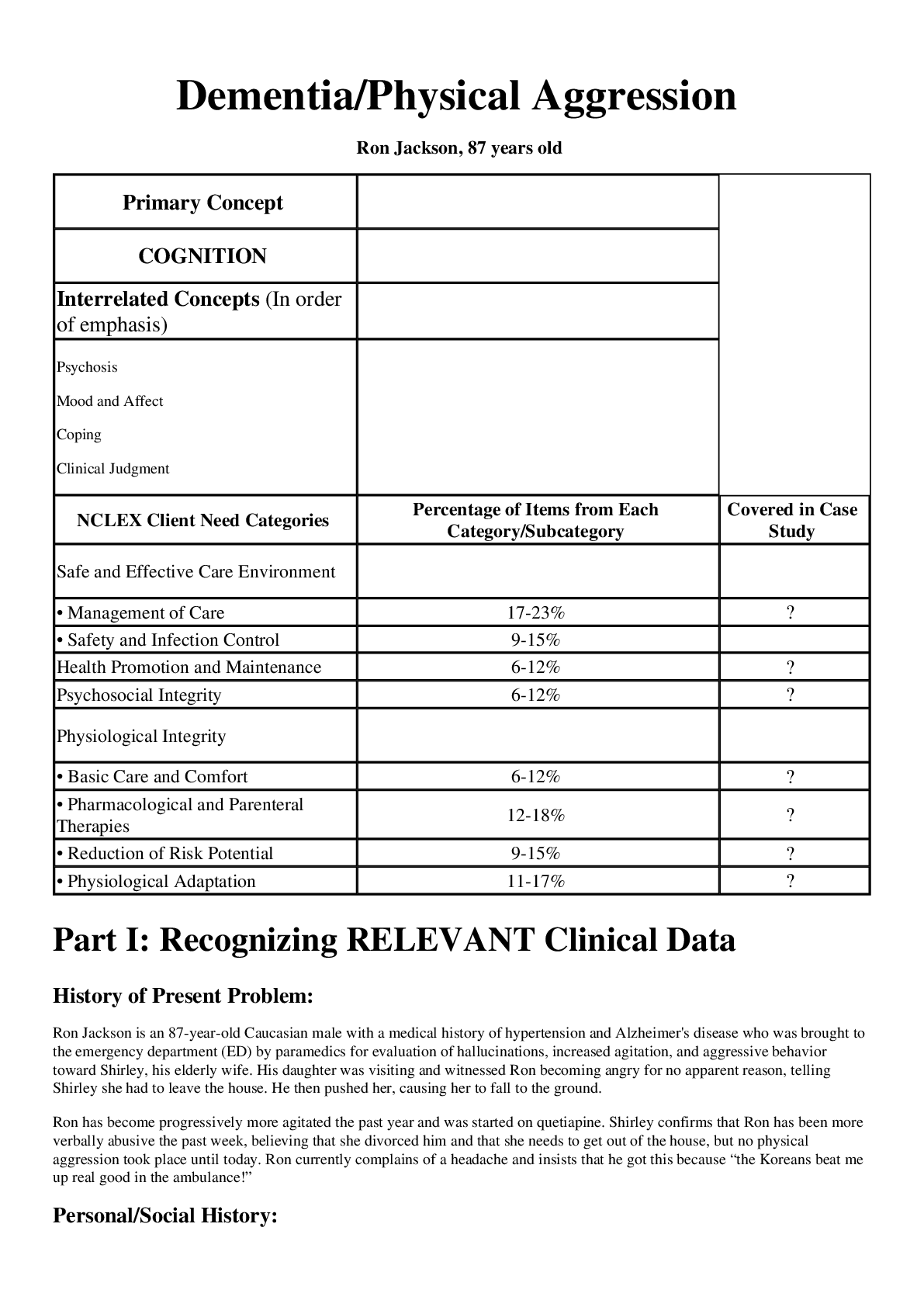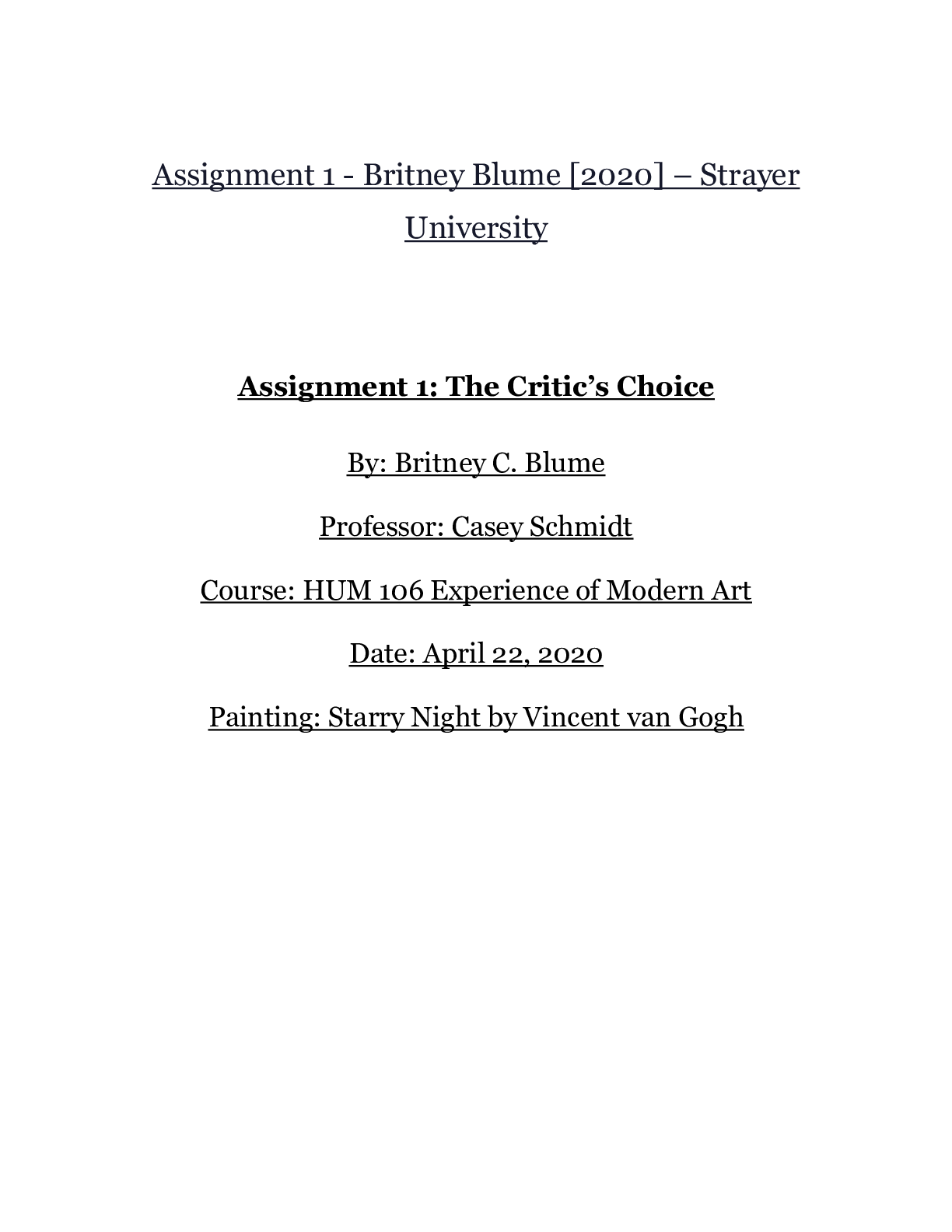*NURSING > CASE STUDY > Jack Holmes _ Sepsis_Septic_Shock_SKINNY_Reasoning_1_LATEST | NURS 3440 Part I: Recognizing RELEVANT (All)
Jack Holmes _ Sepsis_Septic_Shock_SKINNY_Reasoning_1_LATEST | NURS 3440 Part I: Recognizing RELEVANT Clinical Data
Document Content and Description Below
Sepsis/Septic Shock SKINNY Reasoning Case Study STUDENT Jack Holmes, 72 years old Primary Concept Perfusion Interrelated Concepts (In order of emphasis) • Inflammation • Infection ... • Tissue Integrity • Clinical Judgment • Patient Education NCLEX Client Need Categories Percentage of Items from Each Category/Subcategory Covered in Case Study Safe and Effective Care Environment Management of Care 17-23% Safety and Infection Control 9-15% Health Promotion and Maintenance 6-12% Psychosocial Integrity 6-12% Physiological Integrity Basic Care and Comfort 6-12% Pharmacological and Parenteral Therapies 12-18% Reduction of Risk Potential 9-15% Physiological Adaptation 11-17% SKINNY Reasoning Part I: Recognizing RELEVANT Clinical Data History of Present Problem: Jack Holmes a 72-year-old Caucasian male brought to the ED by ambulance from a skilled nursing facility (SNF). According to report from the paramedic, when the SNF nursing staff attempted to wake him this morning, he would not respond, and his BP was 74/40 with a MAP of 51. He has a history of Parkinson’s disease, COPD, CHF, HTN, depression, and a stage IV decubitus ulcer on his coccyx that developed three months ago. He does not follow commands, is unresponsive to verbal stimuli, but responds to a sternal rub with grimacing and withdrawing from stimulus. Personal/Social History: He has lived in the skilled nursing facility the past three years and has been bed bound the past year due to his advanced Parkinson’s disease. He was a heavy smoker, 1 PPD for 40 years until he moved to the SNF. What data from the histories are RELEVANT and must be interpreted as clinically significant by the nurse? (Reduction of Risk Potential) RELEVANT Data from Present Problem: Clinical Significance: RELEVANT Data from Social History: Clinical Significance: Patient Care Begins Current VS: P-Q-R-S-T Pain Assessment: T: 103.4 F/39.7 C (oral) Provoking/Palliative: Not responsive verbally, withdraws to pain, no other indicators of pain P: 135 (irregular) Quality: R: 32 (regular) Region/Radiation: BP: 76/39 MAP: 51 Severity: O2 sat: 91% 2 liters n/c Timing: What VS data are RELEVANT and must be interpreted as clinically significant by the nurse? (Reduction of Risk Potential/Health Promotion and Maintenance) RELEVANT VS Data: Clinical Significance: - - - - - - - - - - - - - - Part II: Put it All Together to THINK Like a Nurse! 1. Interpreting relevant clinical data, what is the primary problem? What primary health related concepts does this primary problem represent? (Management of Care/Physiologic Adaptation) Problem: Pathophysiology of Problem in OWN Words: Primary Concept: Collaborative Care: Medical Management 2. State the rationale and expected outcomes for the medical plan of care. (Pharm. and Parenteral Therapies) Care Provider Orders: Rationale: Expected Outcome: Two large bore (18 g) IVs Fluid bolus 0.9% NS 30 mL/kg (2250 mL) Blood cultures x2 Urine culture Wound culture Vancomycin 2 g IV after cultures collected Clindamycin 600 mg IV every 6 hours If MAP remains <65 after 2250 mL of 0.9% NS…start Norepinephrine 1-12 mcg/min to maintain MAP >65 If MAP remains <65 after norepinephrine at 1 mcg/kg/min…start Vasopressin 0.04 units/minute to maintain MAP >65 Continuous cardiac monitor VS every 5-15” Acetaminophen 1000 mg PR every 6 hours PRN for fever >101 Collaborative Care: Nursing 3. What nursing priority (ies) will guide your plan of care? (Management of Care) Nursing PRIORITY: PRIORITY Nursing Interventions: Rationale: Expected Outcome: 4. What psychosocial/holistic care PRIORITIES need to be addressed for this patient? (Psychosocial Integrity/Basic Care and Comfort) Psychosocial PRIORITIES: PRIORITY Nursing Interventions: Rationale: Expected Outcome: CARE/COMFORT: Caring/compassion as a nurse Physical comfort measures EMOTIONAL (How to develop a therapeutic relationship): Discuss the following principles needed as conditions essential for a therapeutic relationship: • Rapport • Trust • Respect • Genuineness • Empathy CULTURAL Considerations (IF APPLICABLE) 5. What educational/discharge priorities need to be addressed to promote health and wellness for this patient and/or family? (Health Promotion and Maintenance) Education PRIORITY: PRIORITY Topics to Teach: Rationale: [Show More]
Last updated: 2 years ago
Preview 1 out of 8 pages

Buy this document to get the full access instantly
Instant Download Access after purchase
Buy NowInstant download
We Accept:

Reviews( 0 )
$11.50
Can't find what you want? Try our AI powered Search
Document information
Connected school, study & course
About the document
Uploaded On
Feb 21, 2021
Number of pages
8
Written in
Additional information
This document has been written for:
Uploaded
Feb 21, 2021
Downloads
0
Views
122




